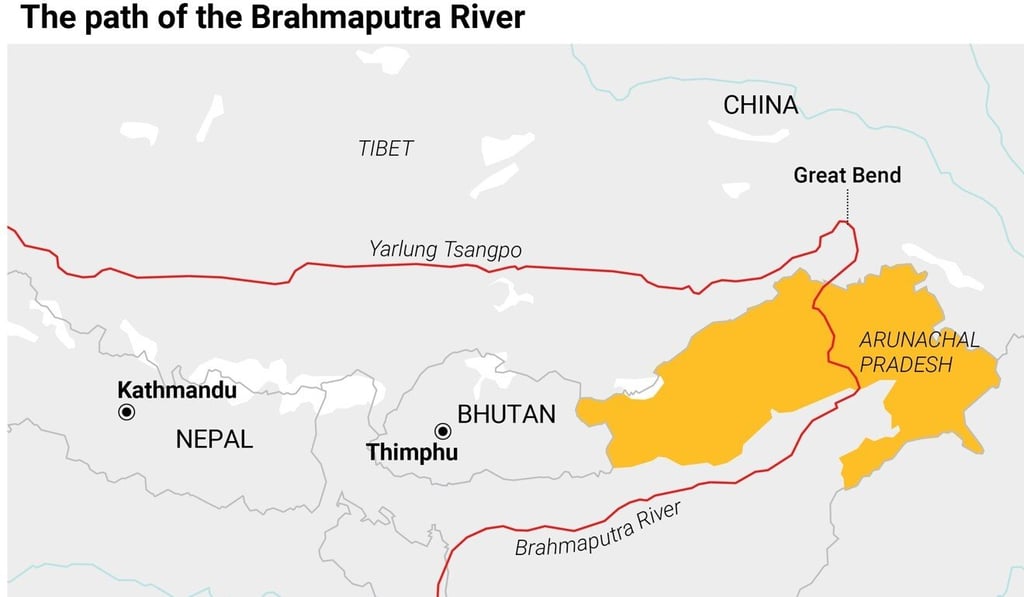Opinion | Why China’s new hydropower project could have security implications for India
- Beijing’s planned dam on the Yarlung Tsangpo river (the Brahmaputra in India) could be another sore point between the neighbours, who are locked in a border dispute
- New Delhi’s security concerns include China’s geoengineering and weather modification programmes and the sudden release of water

From its source in the Himalayas in Tibet, the 2,900km Yarlung Tsangpo/Brahmaputra flows eastward, then turns sharply in what is known as the Great Bend, before rushing through one of the most dramatic gorges in the world and entering India at Gelling in Arunachal Pradesh. This gorge, locally known as the Grand Canyon, is where China intends to build the dam, according to reports.

Water and arable land are limited resources in China, despite its size. It has 20 per cent of the global population but just a third of the arable land per person compared with the rest of the world, and less than 0.7 per cent of available fresh water.
China is already the world’s largest energy consumer, and its emphasis on economic development, power generation expansion and the use of green technologies implies a substantial rise in water consumption by 2035. It is therefore looking to augment its water supplies.
